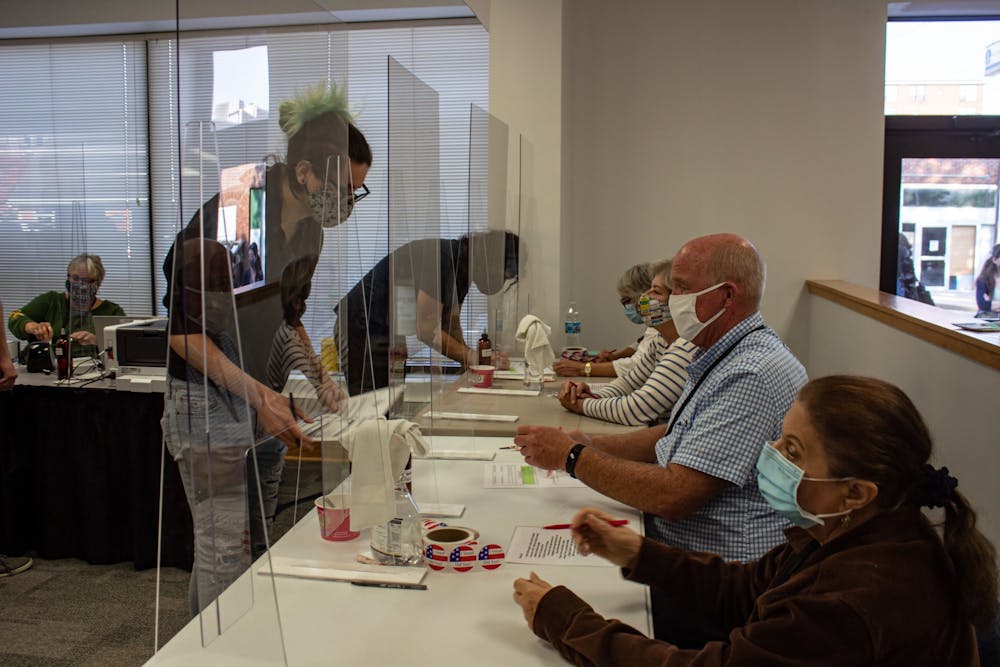A Tufts University study shows there was a significant increase in IU’s student voter turnout from 2016 to 2020.
According to the study by Tufts’ Institute for Democracy and Higher Education, more than 66% of eligible IU students voted in 2020. Compared to 2016, this is almost 22% more in voter turnout, exceeding the 13% total increase for college campuses nationwide.
The data also shows 8.2% more eligible IU students registered to vote in 2020 since the 2016 general election, totaling an 85.9% voter registration rate. Early voting across the IU student body increased by 26%.
Matthew Baggetta, associate professor at the O’Neill School of Public and Environmental Affairs, said young voters typically fall into two schools of thought: they either always vote or ignore the process when they don’t resonate strongly with a candidate.
“Student engagement in politics waxes and wanes,” Baggetta said. “Different time periods bring out different levels of engagement but young people tend to participate more when they connect to an organization and its conversations.”
Mark Fraley, associate director of the Political and Civic Engagement program in the College of Arts and Sciences, said that in the recent election cycle, students were motivated by a variety of social issues including climate change, racial justice and personal freedoms.
In discussing the student demographic, Fraley said many students were motivated by their personal concerns.
"But what unites everyone is the fact that they all want to have some say in creating a world that they belong in," Fraley said.
He noted that since 2016, there has been a lot more political campaigning and debate, and students engaged further with efforts to raise voting participation.
PACE director Lisa-Mari Napoli said that 2016 was one of the biggest years for national investments in student voting. Most Big Ten schools were already part of electoral engagement competitions in addition to empowering students’ political voices.
She said since 2016, PACE and its diverse steering committee were instrumental in tabling, registering voters at events, and raising awareness through social media and press conferences about the importance of voting.
Both Fraley and Napoli said PACE contributed to IU students’ increased early voting turnout through their organization’s social media campaign pushing others to vote early. The steering committee suggested using absentee ballots and other socially-distanced solutions.
In preparation for the 2022 midterm elections, Napoli said PACE will continue trying to encourage students to turn out to vote.
“Voting is the entryway into civic engagement,” Napoli said. “It’s the most fundamental thing we can do in our country to have a voice and influence in our world.”
Fraley said he agrees and encouraged students to see voting more as a declaration of personal expression and engagement in important government policies.
Both Napoli and Fraley said they thought the pandemic sparked people’s desire to participate and vote because it was one of the few ways they could interact with the world and make their voices heard while sheltered at home.
“The pandemic provided an opportunity for people to engage and reflect on some of their concerns in the working world,” Fraley said.
Napoli said she felt the student body is becoming more politically aware.
“It’s another testament to students coming back into the world and becoming motivated to be a part of making a difference in creating a better, more resilient community,” Napoli said.






